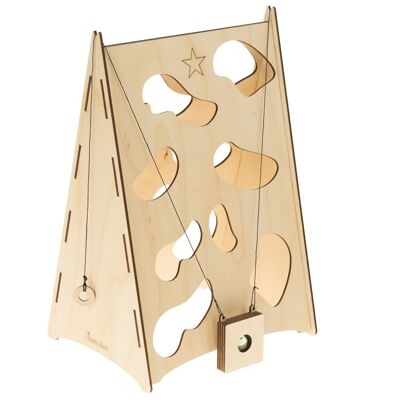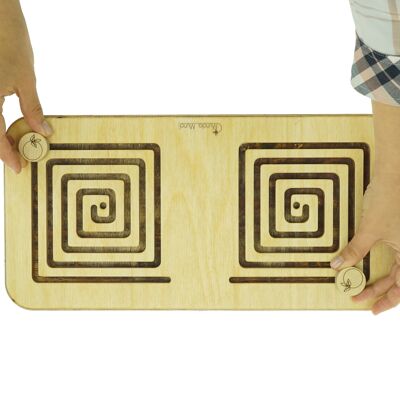


The manual Praxis represents the movements of the hands. In other words, dexterity. And while much is said about the fine motor skills needed to teach a child to write, before that, he must learn to self – serve-brushing his teeth, putting on shoes and tying his shoelaces, preparing breakfast, spreading slices, cutting meat on a plate, pouring liquid from a heavy bottle into a glass without spilling it-all this depends on the level of the manual Praxis. That is, from the movements of the hands from the shoulder, the wrist and the "cooperation" of the fingers, which in essence is the stable basis for good fine motor skills. The dice for manual praxis of the Apostille are another way for the child to perfect the movements of his hands and fingers and increase his dexterity. In addition, playing with them trains the interaction between the two brain hemispheres, "eye-hand" coordination, concentration of attention and spatial orientation. All you have to do is roll the dice and be ready to have fun with the child. He has the task of twisting his fingers in such a way that he makes his hand assume the same position as shown on the dice. You can play for time, for both hands simultaneously by rolling both dice, combine it with other games and tasks, or check which at home is the most accurate in the speed of your hands. The set includes 2 dice with size 5x5x5 CM. Suitable for children over 5 years of age. Other dice game options for manual Praxis : 1) hand shadows – a favorite childhood game of everyone, regardless of his age! Take the dice and a flashlight, turn off the lights and introduce the child to the art of Shadows! Develops imagination, manual praxis and attention. 2) spread on the table modelin. Roll the dice and imitate the position that fell to you. Press the hand into the modelina so that you get a print. It trains the movements of the fingers and hands and the force of pressure necessary for manual creativity such as cutting, gluing, applying, modeling, as well as the hand's ability to write. 3) roll the dice assigned to the left hand (choose the dice for the right hand if you or the child are "left-handed") and perform the set pose with the corresponding hand. Then place it on a white sheet and outline the posture of the hand. Let your imagination tell you what the shape looks like and paint or color. Example. The" wheel " of thumb and index finger can be the head of an exotic parrot, and the other 3 outstretched fingers can be the feathers on it. Paint the body and let the child color the drawing. If the child is younger and still difficult to handle with a pencil, a wonderful variant of this game is to pour a little finger paint with a saucer, in which the child can dip his hand, and then make an imprint on the sheet. Develops manual Praxis, fine motor skills, imagination, attention. 4) " points to..."- Suitable for children over 6 years of age. The players are divided into 2 teams. A player from each team rolls the dice so that only he can see it. His task is to describe the position of Zara without using gestures, but only verbal descriptions. For example, a child is given a thumbs up. He takes the dice and hides it with his hands behind him, so as not to hint unconsciously with gestures. He describes his teammates: "the thumb of the left hand points to the ceiling, and the index, middle finger, ring finger and little finger – to the window.“ When one of the team-mates guesses and shows the position, he wins a point and it's the other team's turn. The game is also suitable to play for time. It develops speech, social abilities, manual Praxis, memory, and auditory and visual attention.






































